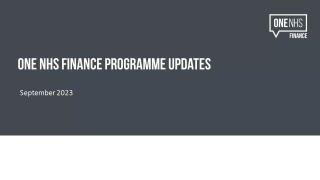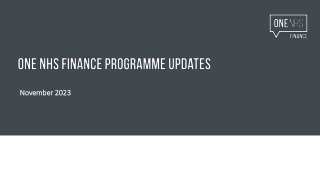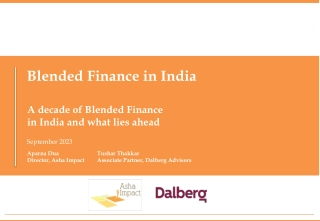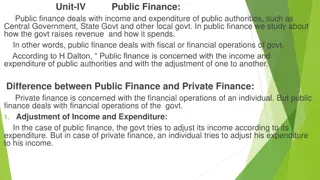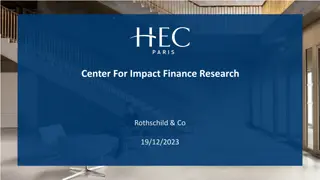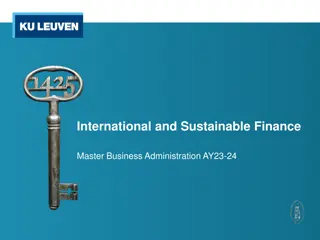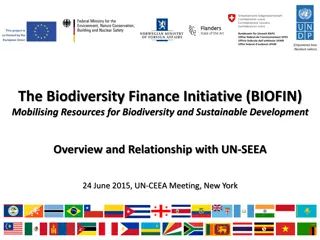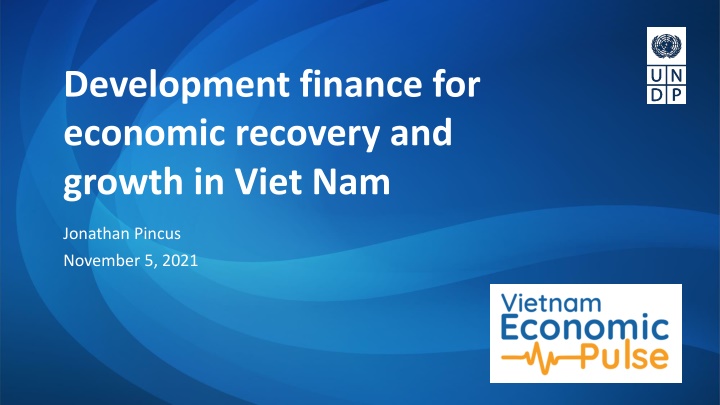
Development Finance for Economic Growth in Viet Nam
Explore the role of financial markets, investment principles, and the national aspect of development finance in fostering economic recovery and growth in Viet Nam. Learn about the relationship between saving and investment, the impact of credit dynamics, and the challenges faced in attracting capital for development.
Download Presentation

Please find below an Image/Link to download the presentation.
The content on the website is provided AS IS for your information and personal use only. It may not be sold, licensed, or shared on other websites without obtaining consent from the author. If you encounter any issues during the download, it is possible that the publisher has removed the file from their server.
You are allowed to download the files provided on this website for personal or commercial use, subject to the condition that they are used lawfully. All files are the property of their respective owners.
The content on the website is provided AS IS for your information and personal use only. It may not be sold, licensed, or shared on other websites without obtaining consent from the author.
E N D
Presentation Transcript
Development finance for economic recovery and growth in Viet Nam Jonathan Pincus November 5, 2021
The essential contribution of financial markets to the process of development is to render long-term financing commitments sufficiently liquid to validate the commitment of resources to long-term uses without requiring individual investors to make long-term financing commitments. Jan Kregel
Asias infrastructure gap 2016-2030 50,000 Taiwan 45,000 Public infra- structure investment Investment requirement without climate change Investment requirement with climate change Japan Korea 40,000 35,000 GDP per capital PPP 2017 2011 30,000 Malaysia 25,000 20,000 Thailand 4.8% 6.9% 8.8% South Asia 15,000 China Sri Lanka Indonesia 10,000 Philippines Laos Vietnam Bangadesh Pakistan India 2.1% 5.0% 5.7% Southeast Asia 5,000 Myanmar Nepal Cambodia 0 30% 50% 70% Public capital stock as % GDP in 2017 90% 110% 130% 150% Source: IMF Source: Asian Development Bank
Principle 1: Investment generates saving (not the other way round) Korea s rapid industrialization from the 1960s began with domestic savings 0.3% of GDP, did not reach 20% until 1973 30% by 1978, never below since Main constraint was access to foreign exchange; trade deficits Government actively rationed foreign exchange for export- oriented industries; restricted credit for consumption and speculation Korea: Growth, saving and investment 45% 14% 40% 12% 35% 10% 30% 8% 25% 20% 6% 15% 4% 10% 2% 5% 0% 0% Gross domestic savings (% GDP) GDP growth (%) Gross capital formation (% GDP)
Principle 2: Credit is not a normal good Banking and currency crises occurred with increasing regularity after liberalization Prices (interest rates) are a poor indicator of risk and returns. Financial markets do not tend to equilibrium They tend to instability as businesses and hh s increase leverage during the boom Savings and investment fell with liberalization Banking, currency, sovereign debt and mixed financial crises 40 35 30 25 20 15 10 5 0 Banking Currency Sovereign Twin (banking-currency) Twin (banking-sovereign) Twin (currency-sovereign) Triple Source: Laeven and Valencia (2020)
Principle 3: Development finance is predominantly national Lucas Paradox: Why doesn t capital flow from rich to poor countries? Countries with current account surpluses export capital: Developing countries accumulated reserves to self-insure against currency crises. Countries that rely more on foreign capital growth more slowly. Capital inflows are pro-cyclical; Capital imports a signal of lack of competitiveness Change in net foreign assets: 30 largest developing countries by population (% GDP) 8% 6% 4% 2% 0% -2% -4% -6% -8% -10% -12% FDI inflows Portolio inflows FDI outflows Porfolio outfloos Change in reserves Current account Change in net foreign assets
The difference between FDI and portfolio flows is more apparent than real US outbound FDI 2000-2019 Net primary income and trade balance, Viet Nam 500 25 20 400 15 300 10 200 5 100 0 2012 2013 2014 2015 2016 2017 2018 2019 2020 -5 - 2000 2001 2002 2003 2004 2005 2006 2007 2008 2009 2010 2011 2012 2013 2014 2015 2016 2017 2018 2019 -10 (100) -15 (200) -20 (300) -25 Reinvested earnings Other equity outflows Trade balance FDI income payments
The main constraint on finance is access to profitable projects, not access to prior savings (aggregate demand, both exports and at home) Unregulated financial markets are prone to asset bubbles, instability, too much short- term lending and too little long-term lending Importing capital is not a realistic solution: countries that rely on domestic finance grow faster, and countries dependent on imported capital are more prone to financial instability Lessons
Secondary markets: deep and liquid bond markets, securitization, stock markets But even countries that have deep secondary markets use the government s balance sheet to increase the supply of long-term finance to specific classes of borrowers. USA: Small Business Administration, Fannie Mae and Freddie Mac UK: Enterprise Finance Guarantee scheme guarantees private borrowing for SMEs ( 100-200 million per year) How to render long-term financial commitments liquid?
National Development Banking MDBs (World Bank) borrow internationally and lend to projects in the developing world. NDBs do the same nationally but the in the local currency. KfW (Germany), BNDES (Brazil), CDB (China), and KDB (Korea) are examples of NDBs that have adapted to changing conditions and needs to increase the supply of long-term credit to specific classes of borrowers NDBs came to the for during the GFC because they were among the few lenders that could extend credit during the crisis. They are owned by governments but 1/3 have private sector participation NDBs guarantee loans by local banks, make direct loans, arrange syndicated financing and other vehicles Successful NDBs earn a profit and NPLs are lower than commercial banks
Public investment Public investment crowds in private investment in developing countries. Public investment is an important countercyclical tool of fiscal policy. The size of the national debt is less important than the interest and growth rates, which determine whether debt is unsustainable. Viet Nam has radically decentralized public investment: 80% under provincial government control (among the highest in the world). Decreasing returns to scale; lack of regional synergies Absence of rigorous criteria for project selection; too many small, politically-motivated projects that do not contribute to national development Delays, slow disbursement
Sovereign Wealth Funds Previously used by resource-rich countries, SWFs now common among Asian exporters of manufactures. SWFs invest for profit to maintain value of capital. For example, to preserve value of oil rents for future generations. Often invest overseas, but also in domestic projects that yield a decent rate of return Ten Largest Sovereign Wealth funds, 2020 (USD billions) Country Norway Name Government Pension Fund Global Assets 1,290 China Investment Corporation 1,046 China Kuwait Investment Authority 693 Kuwait Abu Dhabi Investment Authority 649 Abu Dhabi Hong Kong Monetary Authority Investment Portfolio Temasek Holdings 581 Hong Kong 484 Singapore GIC Private Limited 453 Singapore Saudi Arabia Public Investment Fund 430 National Council for Social Security Fund Investment Corporation of Dubai 372 China 302 Dubai 6,300 Total Source: SWF Institute
Discouraging speculation Reducing waste and inefficacy as important as increasing the volume of investment. Asset bubbles eventually collapse, destroying capital and slowing growth as households and firms deleverage. Incentive structures needed to reduce attractiveness of speculation in land and financial assets Taxes (property and buildings taxes) Limits on credit to speculative activity
Short term: Support for consumption and aggregate demand to accelerate post Covid-19 recovery Viet Nam s fiscal response to the pandemic was inadequate Contraction of private consumption will result in considerable suffering and slower GDP growth than was necessary. Recovery will be slower than necessary because shortfall of demand will cause bankruptcies Borrowing domestically is not inflationary during a period of weak demand 20% 18% 16% 14% 12% 10% 8% 6% 4% 2% 0% Health sector Non-health sector
Policy implications Financial policy is industrial policy: Viet Nam needs to reform existing institutions (Viet Nam Development Bank) and create new institutions to increase the supply of long-term credit to finance infrastructure and increase national competitiveness Competitiveness drives financial development: If Vietnamese companies cannot compete at home and abroad, investment and domestic savings will not grow Countercyclical finance for stability: Curbs on over-lending to properties and equities; an effective brake on capital inflows during periods of excessive credit growth; deficit spending when domestic demand is contracting.

